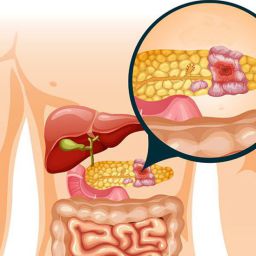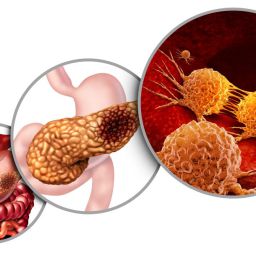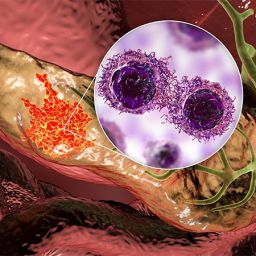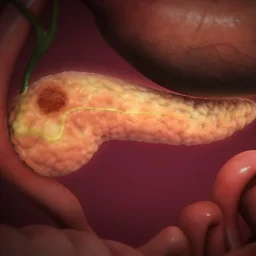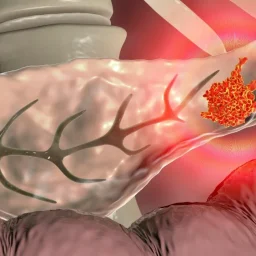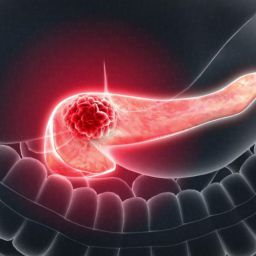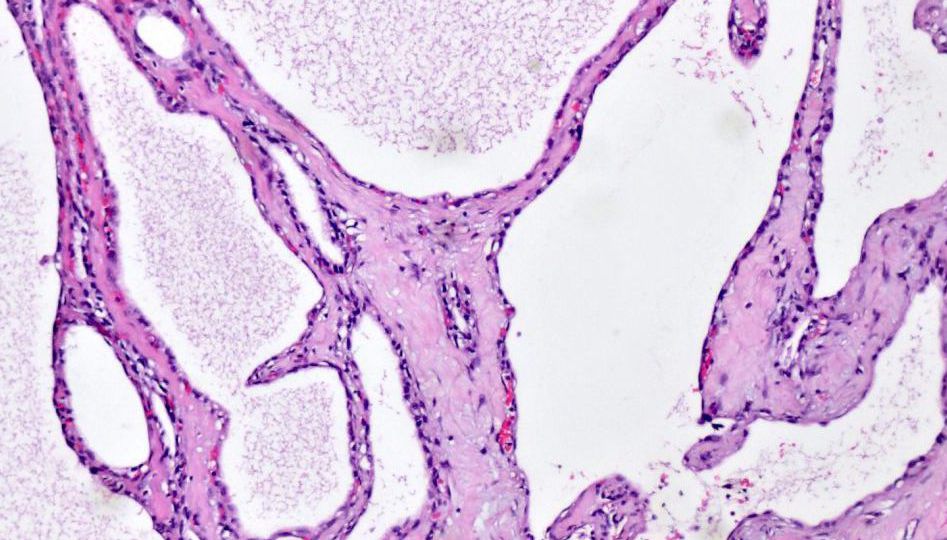
What is Cystadenocarcinoma?
Cystadenocarcinoma is a malignant cancer that originates in glandular tissues and forms cyst-like structures filled with fluid. It can develop in various organs of the body, including:
- Ovarian Cystadenocarcinoma: The most common type of ovarian cancer, affecting the ovaries.
- Pancreatic Cystadenocarcinoma: A rare form of cancer that arises in the pancreas, typically from the ductal cells.
- Other Glandular Organs: Such as the liver, lungs, and salivary glands.
The malignant nature of cystadenocarcinoma makes it highly concerning due to its potential to spread (metastasize) to other parts of the body. When diagnosed early, the prognosis may be better, but the risk of recurrence after treatment remains a critical challenge.
2. What Contributes to the Recurrence Risk of Cystadenocarcinoma?
The recurrence of cystadenocarcinoma after treatment can be influenced by several factors. Understanding these factors is crucial for determining the risk of recurrence and establishing preventive measures. Some key factors include:
2.1 Tumor Grade and Stage

- Grade: The grade of a tumor refers to how abnormal the cancer cells appear under a microscope. Higher-grade tumors tend to grow and spread more quickly, increasing the risk of recurrence.
- Stage: The stage of cancer indicates how far the tumor has spread. Early-stage cystadenocarcinomas (stage I) generally have a lower risk of recurrence compared to late-stage tumors (stages III and IV), where metastasis may have occurred.
2.2 Surgical Resection
The success of surgery in removing the tumor can play a significant role in recurrence risk. If the surgery is not able to remove the entire tumor (due to its size, location, or spread), there is a higher chance that the cancer will recur. Incomplete resection or the presence of cancerous cells at the surgical margins can contribute to recurrence.
2.3 Lymph Node Involvement
When cystadenocarcinoma spreads to nearby lymph nodes, it can significantly increase the risk of recurrence. Lymph node involvement is a critical factor in determining prognosis and influences the need for additional therapies after surgery.
2.4 Metastasis
If cystadenocarcinoma has spread to distant organs or tissues (metastasized), the likelihood of recurrence increases significantly. Metastasis can occur during the early stages of cancer, making early detection crucial for improving long-term outcomes.
2.5 Tumor Biology and Molecular Factors
Genetic and molecular characteristics of the tumor cells play a crucial role in recurrence risk. Specific genetic mutations, such as alterations in the BRCA genes or KRAS mutations, may increase the likelihood of recurrence and affect the cancer’s response to treatment.
2.6 Treatment Response
Patients with cystadenocarcinoma who respond well to initial treatments such as chemotherapy, radiation therapy, or targeted therapy have a lower risk of recurrence. However, those whose tumors are resistant to treatment or who have a relapse after treatment are at a higher risk of recurrence.
3. Preventing Recurrence in Cystadenocarcinoma
While preventing recurrence completely may not always be possible, several measures can be taken to reduce the risk and improve long-term outcomes. These strategies involve a combination of lifestyle changes, ongoing monitoring, and additional treatments aimed at preventing the return of cancer.
3.1 Adjuvant Therapy
Adjuvant therapy refers to additional treatments that are given after the primary treatment (typically surgery) to eliminate any remaining cancer cells and reduce the chance of recurrence. These may include:
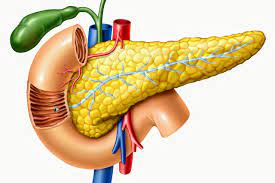
- Chemotherapy: Chemotherapy is commonly used after surgery to target and destroy any remaining cancer cells. This is especially important in patients with high-grade tumors or those with evidence of metastasis.
- Radiation Therapy: For certain types of cystadenocarcinoma, radiation therapy may be recommended to target cancer cells that could not be surgically removed.
- Targeted Therapy: Targeted therapies are designed to specifically target cancer cells based on their molecular characteristics, which can reduce the risk of recurrence in certain patients.
- Immunotherapy: In recent years, immunotherapy has shown promise in treating various types of cancer. It involves stimulating the body’s immune system to recognize and fight cancer cells. This is a developing area for cystadenocarcinoma treatment and may be an option for patients at high risk of recurrence.
3.2 Regular Follow-Up and Monitoring
After treatment, regular follow-up appointments are essential for monitoring the patient’s recovery and detecting any signs of recurrence early. These may include:
- Imaging Tests: Regular CT scans, MRIs, or ultrasounds can help detect the presence of any remaining tumors or new growths.
- Blood Tests: Blood markers such as CA-125 (in ovarian cystadenocarcinoma) can help monitor for cancer recurrence.
- Physical Exams: Routine physical exams by a healthcare professional can help assess any changes in the patient’s condition that may suggest a recurrence.
3.3 Lifestyle Modifications
Certain lifestyle changes may also help reduce the risk of cancer recurrence. While they may not guarantee prevention, adopting healthier habits can improve overall well-being and potentially reduce the risk of recurrence:
- Diet and Nutrition: A balanced diet rich in fruits, vegetables, whole grains, and lean proteins may support overall health and immune function. Limiting processed foods, red meat, and sugars is recommended.
- Exercise: Regular physical activity can help maintain a healthy weight and improve immune function. Exercise has been shown to reduce the risk of cancer recurrence in several studies.
- Avoiding Smoking and Alcohol: Smoking and excessive alcohol consumption are linked to an increased risk of many types of cancer. Quitting smoking and reducing alcohol intake can help reduce the risk of recurrence.
3.4 Genetic Counseling and Testing
For patients with a family history of cancer or those who have been diagnosed with cystadenocarcinoma at a younger age, genetic counseling and testing can help identify inherited genetic mutations that may increase the risk of recurrence. Identifying these mutations may allow for more targeted treatment options and preventative measures in the future.
3.5 Clinical Trials
For patients who are at a higher risk of recurrence, participating in clinical trials may provide access to new treatments that have not yet been widely adopted. Clinical trials are a vital part of advancing cancer care and may offer new options for preventing recurrence, especially for aggressive cancers like cystadenocarcinoma.
4. Prognosis and Outlook
The prognosis for cystadenocarcinoma largely depends on the stage at diagnosis, the grade of the tumor, and how well the patient responds to treatment. Early-stage cystadenocarcinoma that is confined to a single organ and has not spread to lymph nodes or distant tissues tends to have a better prognosis, with a lower risk of recurrence. However, as with any cancer, late-stage diagnoses or metastatic disease significantly increase the risk of recurrence.
For patients with high-risk factors, ongoing management and monitoring are critical for detecting recurrence early. With advancements in treatment options and the availability of adjuvant therapies, many patients with cystadenocarcinoma are able to live full lives after treatment, although the risk of recurrence remains a concern.
Cystadenocarcinoma, like many cancers, carries a risk of recurrence, which can be influenced by a range of factors including tumor grade, stage, treatment response, and genetic factors. While preventing recurrence entirely is challenging, several strategies, including adjuvant therapies, regular monitoring, lifestyle modifications, and genetic testing, can significantly reduce the likelihood of recurrence and improve long-term outcomes.
Patients diagnosed with cystadenocarcinoma should work closely with their healthcare providers to develop a personalized plan that includes not only effective treatment but also strategies to prevent recurrence. By staying proactive and vigilant, individuals can enhance their quality of life and better manage the risks associated with cancer recurrence.

